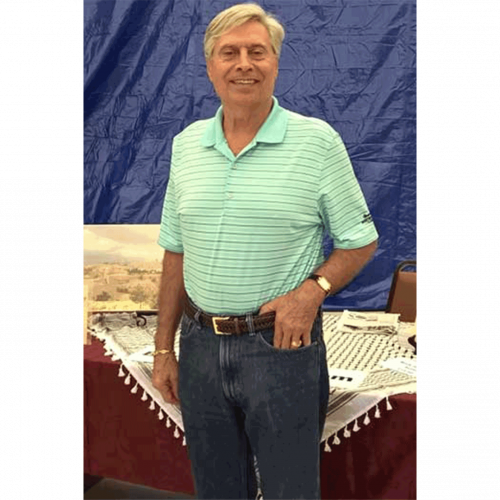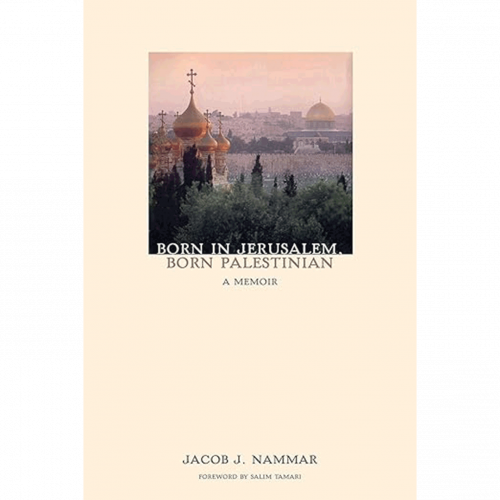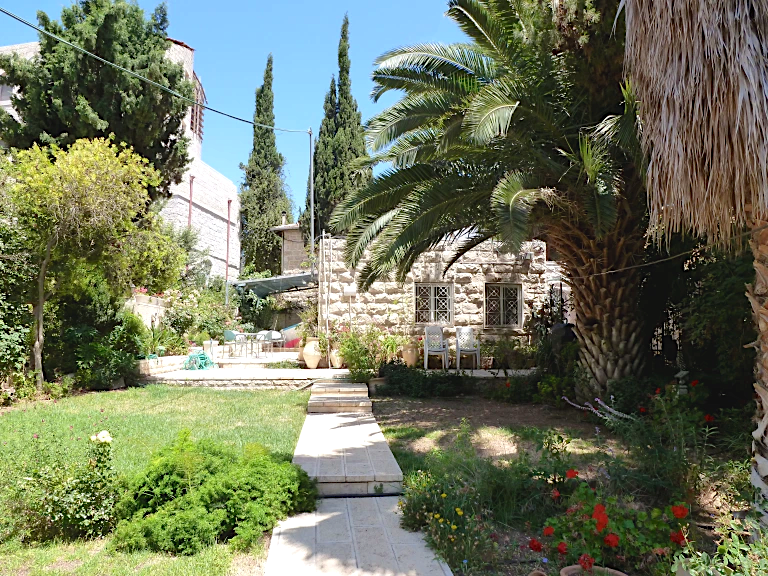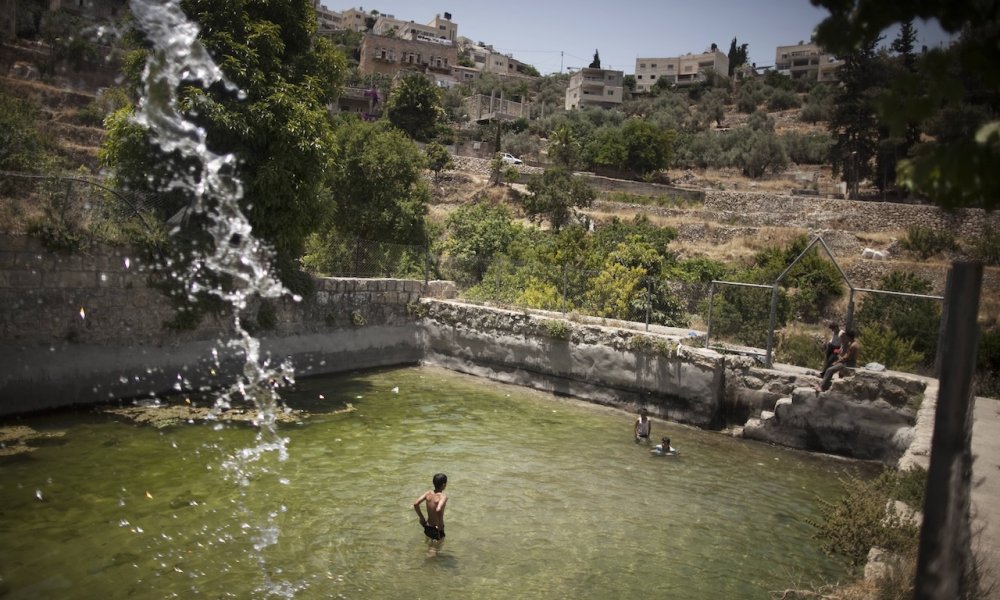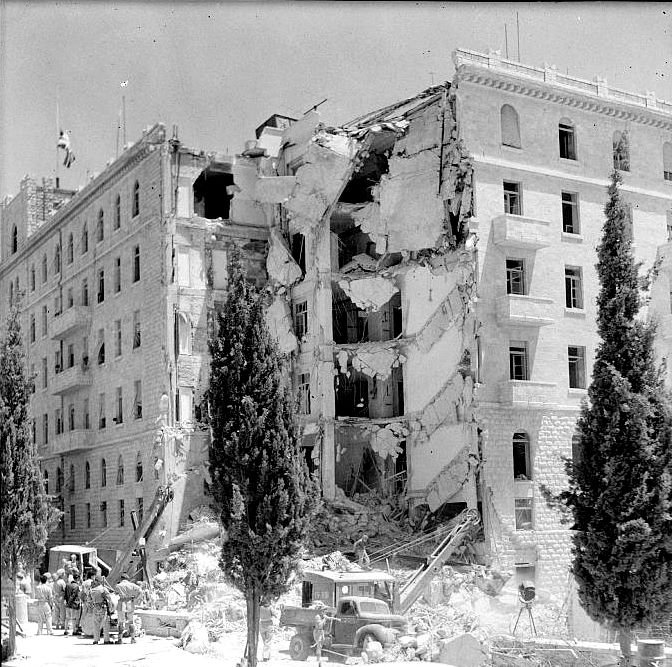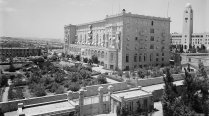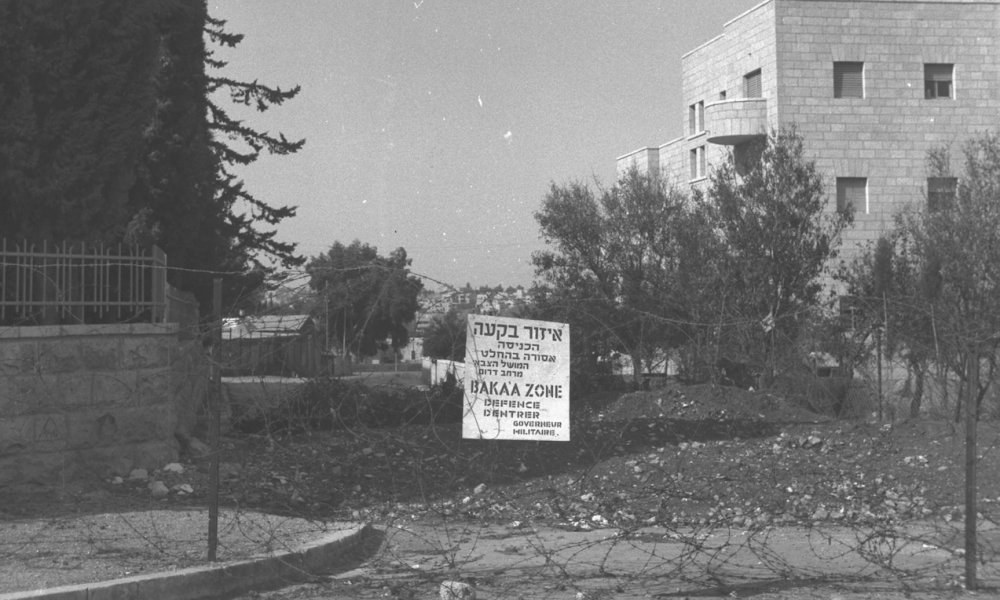Memoirs written by Palestinian Jerusalemites who lived in the middle-class Jerusalem suburbs that comprised the New City before Israel was established describe their panicked flight in the winter and spring of 1948 as Zionist forces closed in on them, as well as their struggles to start over when they found themselves as refugees in unfamiliar environments. Jacob Nammar, author of Born in Jerusalem, Born Palestinian: A Memoir (Northampton, MA: Olive Branch Press, 2012), is one of very few Palestinians who managed to remain in the al-Baq‘a neighborhood after all of what became West Jerusalem was ethnically cleansed of Palestinians. Thus, he can provide a rare, first-hand account of what most Palestinian Jerusalemites never experienced: what it was like to live in a fledgling state that was deeply hostile to the native population, and how it moved quickly to solidify control over them and their assets.
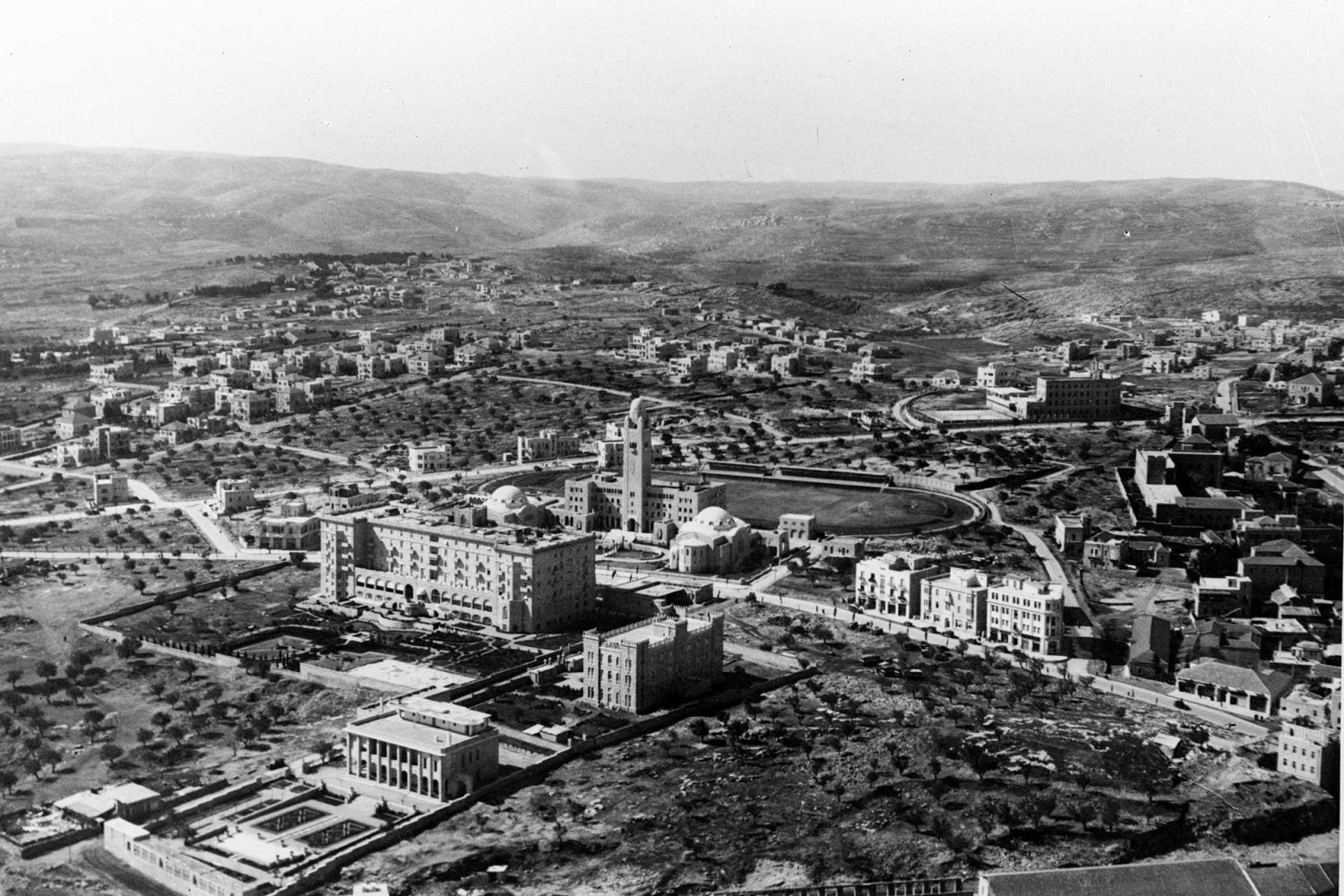
Credit:
Universal Images group via Getty Images, December 31, 1929
Born in Jerusalem, Born Palestinian: A Memoir
Nammar is a member of a large and deeply rooted Jerusalem family; their surname was the name given to the neighborhood in which they lived, Haret al-Nammareh. He was born in the New City neighborhood of al-Baq‘a in 1941 to an Armenian mother who was already widowed with a son, Mihran, when she married Nammar’s father, Yousef Rashid Nammar, a bus driver. Together they had seven children; Nammar was the sixth.
Nammar describes a childhood guided by religious instruction at home and at the Catholic school he attended. Reflecting on that period, he writes: “Jerusalem shaped my spirit, religion, heritage, identity, and earthly consciousness. There I always sensed the presence of God with me.”1 Family life included his mother’s evening storytelling; decades later, he would recall this evening ritual and describe the stories as “cherished gems from my childhood” that enabled him to fall asleep “feeling enveloped in love.”2 He associates these stories, passed from generation to generation, and his parents’ grounding in traditional wisdom, with his love for the Arabic language and its proverbs.
There were weekly family trips to the Turkish bath and monthly outings to the Rex Cinema. He was surrounded by extended family and always had playmates. It seems remarkable that the parents had no formal education yet spoke several languages, and when they needed to speak privately, they resorted to Turkish; their children retaliated by speaking French, which neither parent spoke.
The Jerusalem of his early years was one in which his family name was instantly known to others and in which he could ride any bus for free, a courtesy extended by the drivers to the son of one of their own. His memoirs offer snapshots of early years: his exchanges with mandate soldiers from Scotland and his amusement at their kilts; his walks through Jerusalem’s Old City souk and the smell of roasted peanuts and coffee tickling his nose; leisurely afternoons where women read one another’s fortunes from their coffee cups.
Nammar devotes a chapter to Battir, an agricultural village a few kilometers southwest of Jerusalem. The family had gotten to know a woman who sold her produce in Jerusalem, and they became friendly. He recalled going with his family to attend a wedding there in 1946, which spread over three days, as was the custom at the time. He recalled the terraced orchards of olive trees. (In fact, Battir’s stone terraces, cultivation methods, and irrigation system have hardly changed over the past millennia, reasons that led UNESCO to place the village on its World Heritage Sites in 2014.)
An Ominous Omen
By 1946, the calm Nammar had experienced growing up was coming to an abrupt end. It came in the form of his school bus being shot at:
On one otherwise routine afternoon, the tranquility of my childhood was shattered when our bus was attacked on our way home from school. As we passed near the Montefiore Jewish Colony, machine gun fire broke out from the hilltop, forcing us to lie on top of each other on the floor of the bus while the driver sped ahead. We were terrified. I knew we had been hit because we heard the screams, crying, and panic of students for the rest of the trip. Upon arrival at Baq‘a, we dreadfully discovered that two of our student friends had been killed and many had been wounded. I thanked God that, miraculously, my body had been spared, but I was shocked and spiritually wounded. This experience interrupted my childhood and changed my life forever.3
From then on, he went to school in an armored bus, and he was only allowed to play in his immediate neighborhood.
Jerusalemites who recall that period invariably reference the July 1946 bombing of the King David Hotel by the Irgun gang, which targeted the Colonial British Mandate administrative offices in the hotel’s southern wing, as the beginning of the end of their lives in Jerusalem.
For the Nammar family, the bombing was especially traumatic, because the oldest son, Mihran, worked at the hotel. He survived uninjured but saw bodies in the rubble. Nammar recalls: “Our family despaired when the new terror phase became a permanent reality . . . We were horrified by the intensity of the Zionists’ hatred of Palestinians and by their desire to destroy our society.”4
Nammar could not understand the politics behind the events, but he understood that his life was changing radically and recalled the fear and anger he felt at the time. Perhaps because of frequent family visits to Battir, he paid attention to changes he could see in the village and intuitively understood that they were indicative of general ruin:
I was dismayed to learn that the healthy, peaceful way of life in the village would not continue. The consequences to the community were devastating and many of their customs were destroyed. Battir had subsisted primarily from the fruits of the land and from trade with al-Quds. The village became cut off and the villagers made dependent on each other for survival. The hardships disrupted social life. One noticed how the columns of smoke from the old taboon ovens of each family home in the village began to die out one by one.5
His seventh birthday fell one day after the establishment of Israel. His recollections of the time portray the anxiety of his parents during that period, unsure what to do; he recalls Zionists on loudspeakers explicitly invoking the 1948 Deir Yassin massacre that killed hundreds of Palestinians, as what laid in store for them if they did not leave immediately. Still, the parents debated, reluctant to leave their home, even temporarily. When they decided to leave home for the duration of the fighting, which they did not expect to last long, his mother took the younger children to Jerusalem’s German Colony neighborhood, which they thought would be safe; his father and older brothers would attend to a few things in the house and follow. They were picked up by a patrol, however; the younger boys were allowed to proceed and join their mother, but the father and Mihran were taken away “by heavily armed men who spoke Yiddish and German.”6 Nammar remembers the agony of waiting for his father and brother as bombs and gunfire were closing in on them.
When the family returned home one week later, they found it broken into and vandalized. They perched back in their house, but they were the only family remaining in Haret al-Nammareh. Nammar saw his neighbors’ homes being systematically looted; it was impossible to tell whether the culprits were soldiers or regular citizens since they dressed alike.
Confined to Zone A
Next, the real ordeal began, one that is less known than the typical refugee experience, because so few Palestinians remained in what became West Jerusalem after 1948. One day, the Nammars were forcibly relocated by “several Jewish soldiers who came with a bunch of armed men”7 to a “fenced security area (Zone A) . . . a large open prison camp, surrounded by eight feet of barbed wire, with armed guards preventing anyone from leaving or entering. There was no communication with the outside world.”8
They were confined to this prison for two and a half years, in cramped quarters and sharing bathroom facilities with other Palestinian and non-Jewish families in their predicament. Nammar recalls that they were frequently hungry and that he and his siblings could not go to school, work, or engage in any organized activities. From time to time, Shin Bet officers would “come in the middle of the night to take our neighbors, handcuffed and blindfolded, away from their homes. We never knew why they were taken, and some never returned.”9 Nammar’s father and his brother remained missing, held in a Jewish prison and forced labor camp. For his mother, the Nakba overlaid one trauma on another older one: she was a survivor of the Armenian genocide, and now her husband and son were missing, she lost her home, and she was dependent on UNRWA rations to feed her family.
Two and a half years after the State of Israel was established, Zone A was finally dismantled.
A Transformed Landscape
When they tried to return to their home, they found it occupied by two Jewish immigrant families who spoke only Yiddish. The government had granted them the house and the Nammar family were considered “absentees.” Their house no longer belonged to them.
The state gave them identification papers, but not equal citizenship. In Nammar’s ID card, his nationality was listed as “Armenian.”10
The family was eventually reunited after three years.
What was it like for a Palestinian to live in Israel in the early years following the establishment of the state when Jewish citizens seemed dazzled by the splendid expanse they saw and claimed it as their own? Nammar describes it as akin to living among sharks:
I grew up as a minority amid constant threats and fear of the watchful eyes of the Shin Bet secret police. They seemed to have agents everywhere we went. It was like swimming in a sea full of sharks. We could not tell the good guys from the bad. They were disguised in military or police uniforms, or as male or female civilians. At one point or another, they spied on and interrogated almost each and every person in my family, and many of my friends. It became a continuous routine of Gestapo-like harassment, bullying, and intimidation.11
At various points in the account, Nammar observes that it was their community that enabled them to survive. He found solace in his family, and his account makes clear that that the children rallied around their mother and relied on one another in the new and hostile environment. He was also fortunate to meet several Palestinians who, like his family, had remained during the war. They gave him odd jobs in exchange for history lessons and fresh bread. Eventually the Catholic church opened two schools in West Jerusalem for boys and girls, and he returned to school. He attended Saint Joseph School and two years later enrolled in Terra Sancta College. One of the priests organized a school club that hosted dances and other activities, and Nammar seemed to have thrived there and he tried to put the harsh early years of occupation behind him.
It was through the YMCA that Nammar found purpose. From around 1952 until 1964, he devoted hours to developing his athletic skills; as he put it, the Y “not only got me off the streets but it gave me protection and introduced me to a wide range of productive activities.”12 He adds: “At the beginning, I saw the Y as a means to escape from my daily hardship. Instead, it opened up an entire world for me. I found refuge and a sacred, personal space . . . it became the center of my life.”13 It is interesting that other Palestinians found employment at the Y; Nammar claims that most of the full-time staff were Palestinians. He began working as a lifeguard and then a summer camp counselor; his athletic skills were recognized by coaches who tried to lure him to their teams. By age 18, he was sent to an institute for training and made an assistant physical education director. In the late 1950s he joined the men’s basketball team and quickly became the star player.
But when he had a shot at playing on the national basketball team, he found himself rejected. The Jewish fans could not accept a Palestinian playing on the team, no matter how skilled; the racial insults they hurled at him and the referee’s unfair calls against him took a toll.
By 1963, Nammar had had enough.
The discrimination I felt on the basketball team was the final straw. It was then that I made up my mind to leave my beloved al-Quds behind and pursue higher education, as Mama had encouraged me. She understood my pain more than anyone else. Sometimes it is not the easiest thing to do, she would say, but it is the right thing. My life had to change.14
By the time he made the decision to emigrate, many of his siblings had already left; they too experienced being fired from jobs for no reason and realized that there was no future for them in a state that regarded them as undesirable. By then too, his father had died, after being beaten down by circumstances and finding himself unemployable.
This book was published in 2012 when Nammar was 71 years old. In the epilogue, he reflects on the difficulty of traveling to Jerusalem, even with a foreign passport. He recalls a time when Jerusalem was a truly international city, open to all, a magnet for believers from the four corners of the world who wanted to experience for themselves the awesome al-Quds, the holy city. He holds on to the symbol of Palestine, the olive tree. Reading this memoir against the ongoing genocidal war of Israel against Palestinians throughout the country, but most nakedly in Gaza, the need to hold on to symbols of endurance grows more urgent, as does the need to end the calamity that has befallen this holy land’s generous and long-suffering people.


